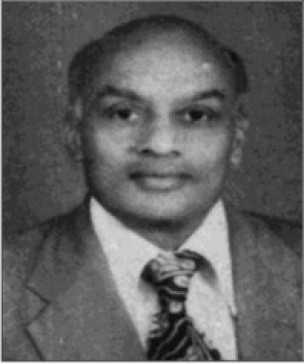G. Rangaswamy

| Name | G. Rangaswamy |
| Designation | President |
| Complete postal Address with city code | Indian Phytopathological Society |
| Email IDs | xyz@gmail.com |
| Mobile No. | 123456789 |
Brief Biodata
Passing out of the Agricultural College, Coimbatore in 1946, with the first degree in Agriculture and as a rank holder and award winner in Agricultural Botany and Plant Pathology, he was appointed as a Research Assistant in Mycology Division of the College, where he had the opportunity of getting trained under the then leading Mycologists such as Prof. K.M. Thomas and Prof. T.S. Ramakrishnan. During his deputation period of 1951-53 to the Indian Agricultural Research Institute, New Delhi for Associateship, he had the opportunity of getting the best training under Dr. R.S. Vasudeva. Working on the survival of plant pathogens in soil, he was able to isolate the chemical from Bacillus sp., which inhibited growth of Alternaria solani, and was named 'Bulbiformin'. His work got him recognition along with the first rank and first class in the Institute. Soon he got admission in the newly started Institute of Microbiology at Rutgers State University, N.J., U.S.A., built from the royalties of the wonder drug Streptomycin, where he was fortunate to work directly under the guidance of Dr. Selman A. Waksman, Nobel Laureate and Director of the Institute. His Ph.D. thesis covered the discovery of a new antibiotic named 'Streptothricin' and its antifungal activities and also use of other antibiotics on plant disease control.
Returning to India in 1956, he worked for a short period during 1956-58 at the Agricultural College, Coimbatore, when he wrote the Monograph on Pythiaceous Fungi, which was published by the ICAR in 1963. Moving to Annamalai University in 1958, he was instrumental in starting the second Agricultural College in Tamil Nadu and for establishing the Department of Agricultural Microbiology, first of its kind in India, to offer M.Sc. Ag., and Ph.D. courses in the subject. From then on he and his students concentrated on the studies on inter-relationships between soil-plant and microbes under various environmental and agronomic conditions. The work on sperrnosphere, phyllosphere and rhizosphere and the ways and means of influencing them in relation to plant pathogen and plant infections along with survival of plant pathogens in soil is considered classical and poineering. During this period at Annamalai University his book on 'Bacterial Plant Diseases in India' was published in 1962, which lead to intensification of studies bacterial plant pathogens from different laboratories accounting for more than one hundred of them are recognized today as serious plant pathogens. his book on 'Diseases of Crop Plants in India' published 1972 by Prentice Hall, has been revised and republished repeatedly and today it has stood the test of time is considered to be one the most frequently referred text books in the subject in India and other Asiancountries. His book on 'Agricultural Microbiology covering all aspects of micoorganisms in agriculture including plant pathogens is a pioneering andmonumental work.
He has guided several
students for Masters doctoral degrees, while working at three University. In
recognition of his work, the University of Madras has appointed him as
Professor Emeritus-Life 1ife Time of the University in Centre for Advanced
Studies in Botany. Besides, he is considered as one of the leaders in
agricultural education and management in India. He has been President, Editor
and Executive Member of India Phytopathological Society and is also Fellow of
several Scientific Bodies in India and abroad. He has been conferred D.Sc. Honoris
causa by the University of Agricultural Sciences, Bangalore, Tamil Nadu Agricultural
University and the Pondicherry Central University. At this age of 75, he is
very active in articles, revising his earlier books and consultant for various
private sector agencies.